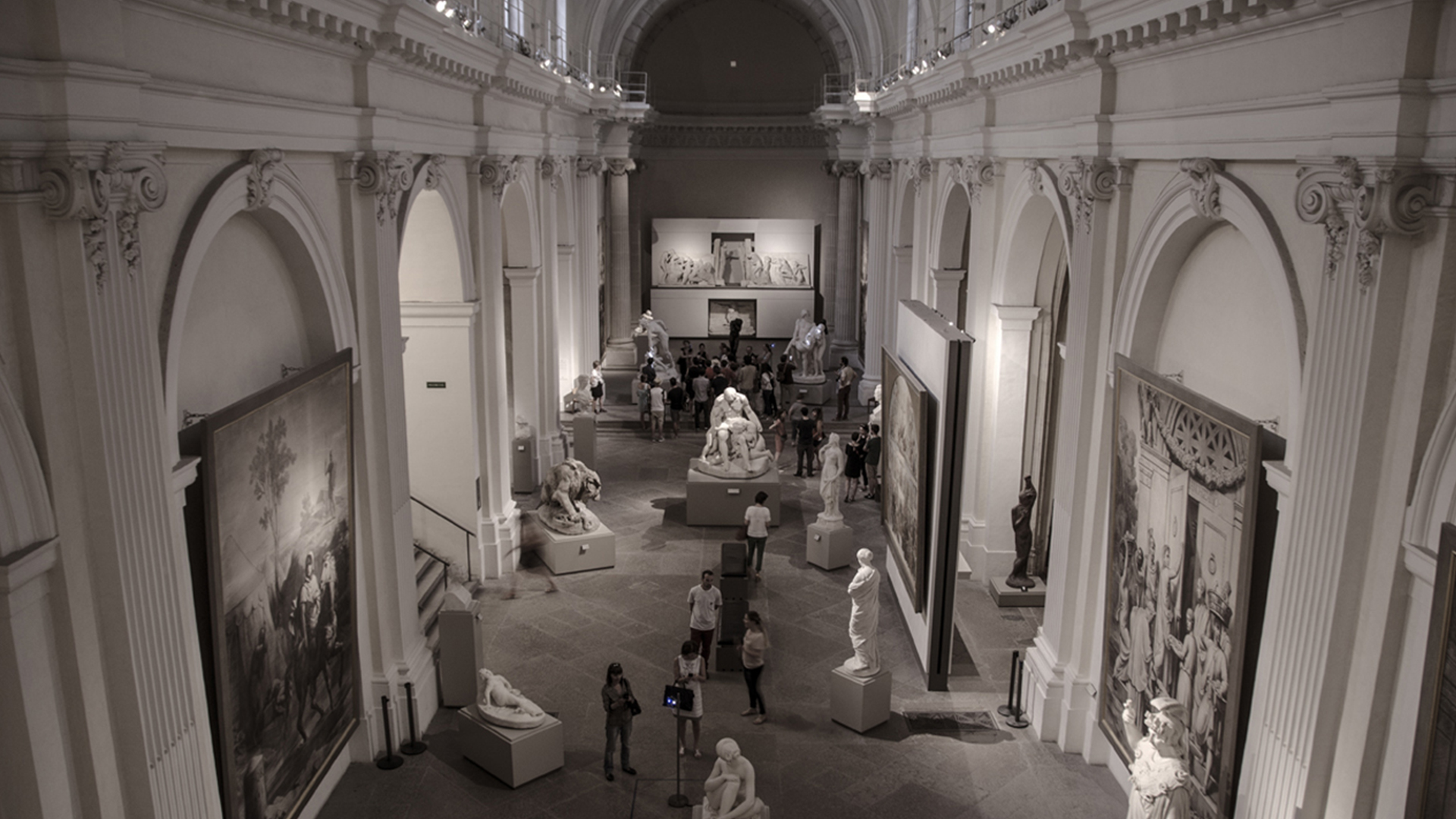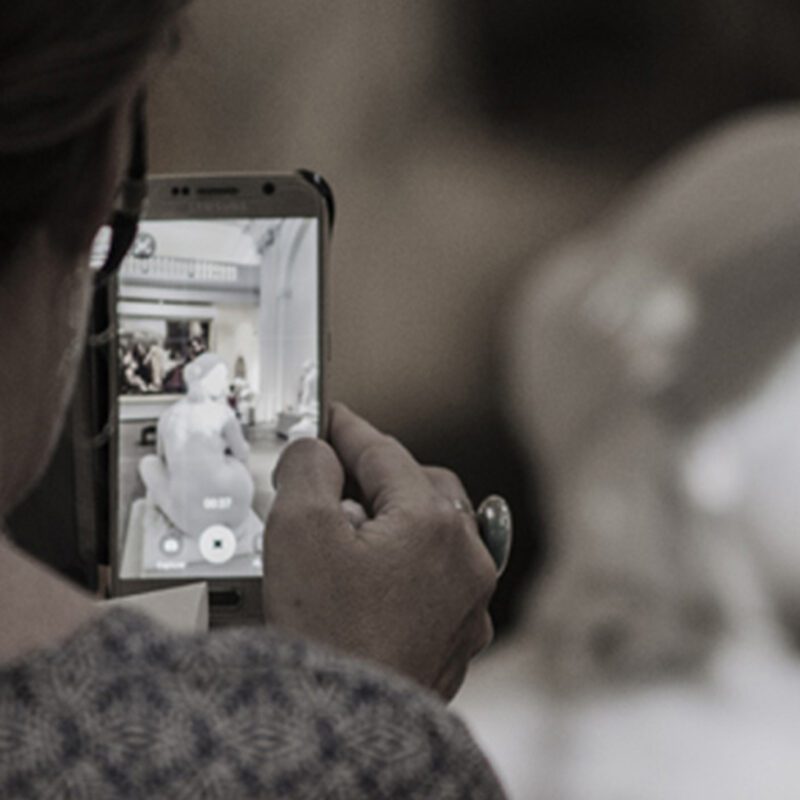Golem is an emblematic project of augmented sculptures. This museographic installation was created as part of the Musée des Beaux-Arts de Lyon’s ten-year acquisition programme. The project aims to breathe life into classic sculptures using digital art. It questions the fine line between virtuality and the representation of reality.
The Musée des Beaux-Arts de Lyon has invited Arnaud Pottier, director of Ateliers BK, to bring three statues from its collection to life, breathing new life into its heritage. GOLEM x MBA was the very first installation to be realized in the premises of this high cultural place in Lyon.
Artistic approach: breathing life into sculptural works
Busts of classic works are brought to life through video-mapping, 3D and 2D animations projected onto the sculptures. Projections of video streams bring to life the Venus Italica, Silenus carrying Dyonisos or even Apollo from the Belvedere. At first glance, the digital overlay acts like a modern update of the work. But in this fusion of classical art and contemporary technology, the Golem project is proving to be much more than a simple update. He creates a profound reflection on the changing nature of reality, how our perception is altered by the introduction of new media and how we interact with cultural artefacts.
The familiar faces of the statues are transformed before our eyes into something new, lively, but also disturbing. Golem evokes Freud’s concept of the ‘uncanny’, where the familiar suddenly becomes strange and disturbing. Golem shapes the contrast between the permanence of the sculptures and the ephemerality of the video projections, between the frozen past and the vivacity of the present. Statues, once symbols of permanence and stability, become screens onto which multiple and changing realities are projected. They encourage us to think about how our own identity is shaped by the different layers of technological mediation that surround us.
By coming to life and showing emotion, these silent figures, immobile witnesses to the passage of time, seem to invite us to share their stories, their pain and their hopes. They remind us that, despite all our technological advances, we remain linked to our cultural heritage and our common humanity.








